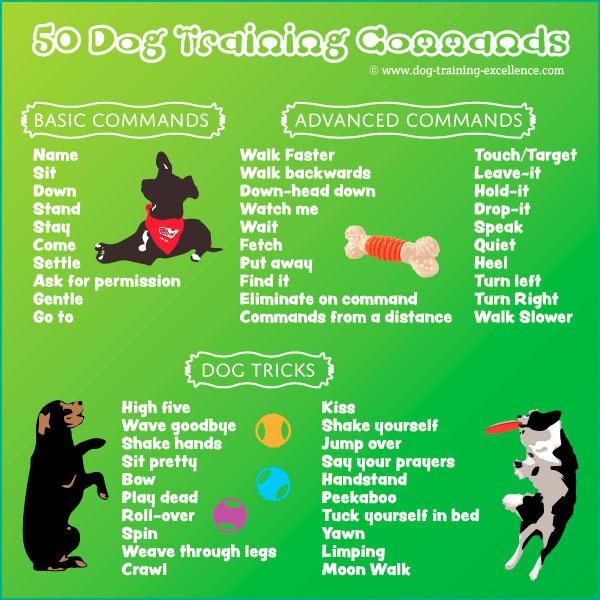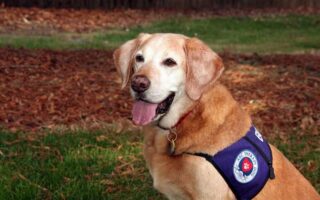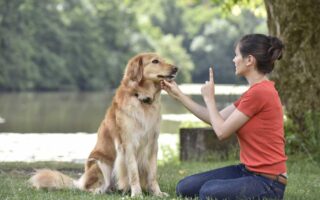Title: Unleashing Genius: Exploring the Art of Advanced Dog Tricks
Introduction:
In a world where the bond between humans and their canine companions is celebrated, the art of training dogs has transcended basic obedience to reveal a realm of creativity and intelligence. While sit, stay, and roll over may form the foundations of canine education, advanced dog tricks offer an exciting avenue for both dogs and their owners to engage in a deeper communication and understanding of one another. Imagine your loyal friend not only mastering impressive feats like playing dead or dancing on command but also learning to fetch specific items, navigate obstacle courses, or even perform complex sequences that would astonish any audience. This article delves into the fascinating world of advanced dog tricks, exploring the benefits of mastering these skills, the techniques to train them, and the joy they can bring to both dogs and their owners alike. Whether you’re a seasoned trainer or just beginning your journey, there’s always a new trick to learn and a new way to connect with your four-legged friend.
Table of Contents
- Mastering Complex Commands to Enhance Your Dogs Skills
- Building a Strong Foundation for Advanced Trick Training
- Fostering Communication: The Key to Understanding Your Dog
- Engaging and Rewarding: Choosing the Right Reinforcement Techniques
- Q&A
- Closing Remarks
Mastering Complex Commands to Enhance Your Dogs Skills
To truly unlock your dog’s potential, it’s essential to dive into the realm of complex commands. These advanced tricks not only improve your dog’s obedience but also foster an enriching bond between you and your furry companion. Start by breaking down challenging behaviors into manageable components. For instance, teach your dog to “roll over” first, then gradually add a follow-up command like “play dead”, making use of their natural ability to follow cues. This layered approach ensures your pup understands each step before moving onto the next, making the learning experience both effective and enjoyable.
Implementing practice routines with variations can keep your dog engaged and eager to learn. Here are some exciting ideas to spice up training sessions:
- Incorporate objects: Use props like hula hoops or balls to create a fun obstacle course.
- Combine commands: Mix commands your dog already knows, like “sit” followed by “shake a paw”.
- Use treats strategically: Reward your dog intermittently to maintain enthusiasm and motivation.
| Command | Purpose | Benefit |
|---|---|---|
| Backwards Step | To improve spatial awareness | Enhances balance and coordination |
| Find It | Encourage scent tracking | Stimulates mental engagement |
| Circle | Promote movement and agility | Improves flexibility and responsiveness |
Building a Strong Foundation for Advanced Trick Training
To embark on the journey of advanced trick training, you must first establish a solid base of essential commands and cues. This groundwork not only builds trust between you and your dog but also enhances their confidence in learning more complex tricks. A few fundamental commands to master include:
- Sit: A staple command that serves as the starting point for many tricks.
- Stay: Crucial for maintaining your dog’s position while you introduce more challenging tasks.
- Come: This command reinforces recall, ensuring your dog returns to you when called.
- Down: A versatile position that is often a precursor to advanced tricks.
Next, consistency and positive reinforcement play key roles in your training methodology. Dogs thrive when they receive clear signals and rewards for their efforts. Craft a training schedule that includes short sessions, repeated practice, and loads of praise or treats when your dog correctly performs a command. Consider tracking their progress through a simple table, helping to visualize accomplishments and areas needing improvement:
| Trick | Days Practiced | Success Rate (%) |
|---|---|---|
| Sit | 5 | 100 |
| Stay | 4 | 85 |
| Roll Over | 3 | 60 |
Fostering Communication: The Key to Understanding Your Dog
Understanding your dog goes beyond basic commands; it requires an intricate dance of cues and signals. Developing a fluent communication channel means observing and responding to your dog’s unique way of expressing themselves. Dogs communicate through a variety of methods, including body language, vocalizations, and even their eyes. By becoming attuned to these forms of expression, you can deepen your bond and enhance training efficiency. Some key aspects to watch for include:
- Tail positioning: A wagging tail usually signifies excitement, but it can also mean anxiety depending on the speed and direction.
- Ears and eyes: The position of their ears and the focus of their gaze can reveal a lot about their mood.
- Posture: A relaxed dog appears loose and playful, while a tense dog may hesitate or cower at your approach.
Incorporating these observations into your training sessions can dramatically improve how your dog perceives commands and new tricks. When teaching complex tricks, ensure that you are reinforcing the right behavior consistently. One effective strategy is to create clear associations between cues and actions. For instance, you could utilize a simple table to map out commands and their corresponding behaviors to keep both you and your dog on track:
| Command | Behavior | Reward |
|---|---|---|
| Sit | Dog’s rear on the ground | Verbal praise + treat |
| Roll Over | Dog rolls over on its back | Chew toy + belly rub |
| Play Dead | Dog lies still on its side | Treat + lots of affection |
By fostering a two-way communication style that respects your dog’s individuality, not only will you unlock the potential for advanced tricks, but you’ll also nurture a fulfilling relationship built on trust and understanding.
Engaging and Rewarding: Choosing the Right Reinforcement Techniques
Selecting the right reinforcement techniques is crucial for teaching advanced dog tricks effectively. Dogs thrive on positive reinforcement, which not only strengthens the bond between you and your pet but also enhances their eagerness to learn. Consider using the following methods to keep your training sessions fun and productive:
- Treats: High-value treats can be a game changer, especially for tricky maneuvers.
- Verbal Praise: A simple “Good Boy!” can motivate your dog immensely.
- Playtime: Use their favorite game as a reward to boost enthusiasm.
- Clicker Training: The sound of the clicker provides a distinct signal that reinforces correct behaviors.
Establishing a consistent reinforcement schedule is also vital. Dogs respond well to less frequent but highly rewarding sessions once they’ve mastered a trick. Below is a simple overview of potential reinforcement schedules to consider:
| Schedule | Description |
|---|---|
| Continuous | Rewards given every time the dog performs the desired behavior. |
| Intermittent | Rewards given randomly, helping to maintain interest. |
| Variable Ratio | Rewards given after an unpredictable number of correct responses. |
Q&A
Q&A: Unlocking Canine Potential with Advanced Dog Tricks
Q: What are advanced dog tricks?
A: Advanced dog tricks go beyond basic obedience commands like sit, stay, and come. They include complex behaviors that require not only training but also a greater level of communication and bond between the dog and its owner. Think of tricks like playing dead, rolling over, or even more intricate ones like dancing on hind legs and fetching specific items by name.
Q: Why should I teach my dog advanced tricks?
A: Teaching your dog advanced tricks can be a wonderful mental and physical exercise for both of you. It stimulates your dog’s mind, improves the bond you share, and provides an outlet for pent-up energy. Plus, it can be a fun party trick or a way to impress friends and family!
Q: What benefits do advanced dog tricks offer?
A: Beyond entertainment, advanced dog tricks can enhance your dog’s focus, obedience, and confidence. They often require critical thinking which can alleviate boredom and reduce behavioral issues. Moreover, mastering a trick can provide a significant morale boost for both you and your pup, as it builds trust and establishes clear communication.
Q: How do I get started with teaching advanced tricks?
A: Start with a solid foundation of basic commands. From there, you can introduce one advanced trick at a time. Use positive reinforcement techniques, like treats and praise, to encourage your dog. Break the trick down into manageable steps, allowing your dog to grasp each segment before progressing. Consistency and patience are key!
Q: Are there specific breeds that excel at learning advanced tricks?
A: While any dog can learn advanced tricks, certain breeds are renowned for their intelligence and eagerness to please, making them more adept at learning complex behaviors. Breeds like Border Collies, Poodles, and German Shepherds often top the list, but don’t underestimate the capabilities of mixed breeds and less traditionally recognized breeds!
Q: How long does it typically take to teach a dog an advanced trick?
A: The time it takes to teach an advanced trick can vary greatly based on your dog’s age, breed, and individual personality, as well as your experience as a trainer. Some dogs may grasp a new trick within a few sessions, while others may require weeks of practice. Remember, the journey is just as important as the destination!
Q: What if my dog struggles with a trick?
A: If your dog seems to struggle, don’t be discouraged! It could be beneficial to take a step back and simplify the trick. Revisit earlier training sessions, ensure your dog is comfortable with the commands, and try different approaches to teaching. Sometimes all they need is a different angle or a little extra encouragement.
Q: Can advanced tricks be dangerous for my dog?
A: Safety should always come first. While most advanced tricks are safe, some require careful monitoring to ensure your dog doesn’t overexert themselves or risk injury. Always assess your dog’s physical ability and health before attempting tricks that involve jumps or physical strain, and consult a vet if you’re unsure.
Q: Are there resources available for learning advanced tricks?
A: Absolutely! Many online platforms, dog training books, and even local training classes can help you dive into the world of advanced dog tricks. YouTube is an excellent resource for visual learners, where countless trainers share step-by-step tutorials. Just be sure to select credible sources for the best guidance.
By exploring advanced dog tricks, you not only engage your pet’s mind but also create a deeper bond through shared learning experiences. So grab some treats, pick a trick, and embark on a journey of fun and excitement with your furry friend!
Closing Remarks
As we conclude our exploration of advanced dog tricks, it’s clear that the journey alongside our canine companions is one filled with joy, patience, and mutual growth. From impressive spins to intricate choreography, the skills you and your dog can develop together not only enhance your bond but also transform training into a rewarding adventure.
Remember, the essence of teaching these tricks goes beyond the flashy performances; it’s about fostering communication and understanding between you and your furry friend. Each moment of practice strengthens your relationship, builds confidence, and enriches your dog’s life with mental stimulation and fun.
So, whether you’re aiming to dazzle your friends at the next gathering or simply looking to engage your pup in something new, embrace the challenge with enthusiasm. Celebrate every small victory along the way, and don’t forget to enjoy the whimsical moments that come with teaching your dog something extraordinary. Here’s to many delightful performances and a lifetime of shared experiences—after all, the journey is as rewarding as the tricks themselves. Happy training!



